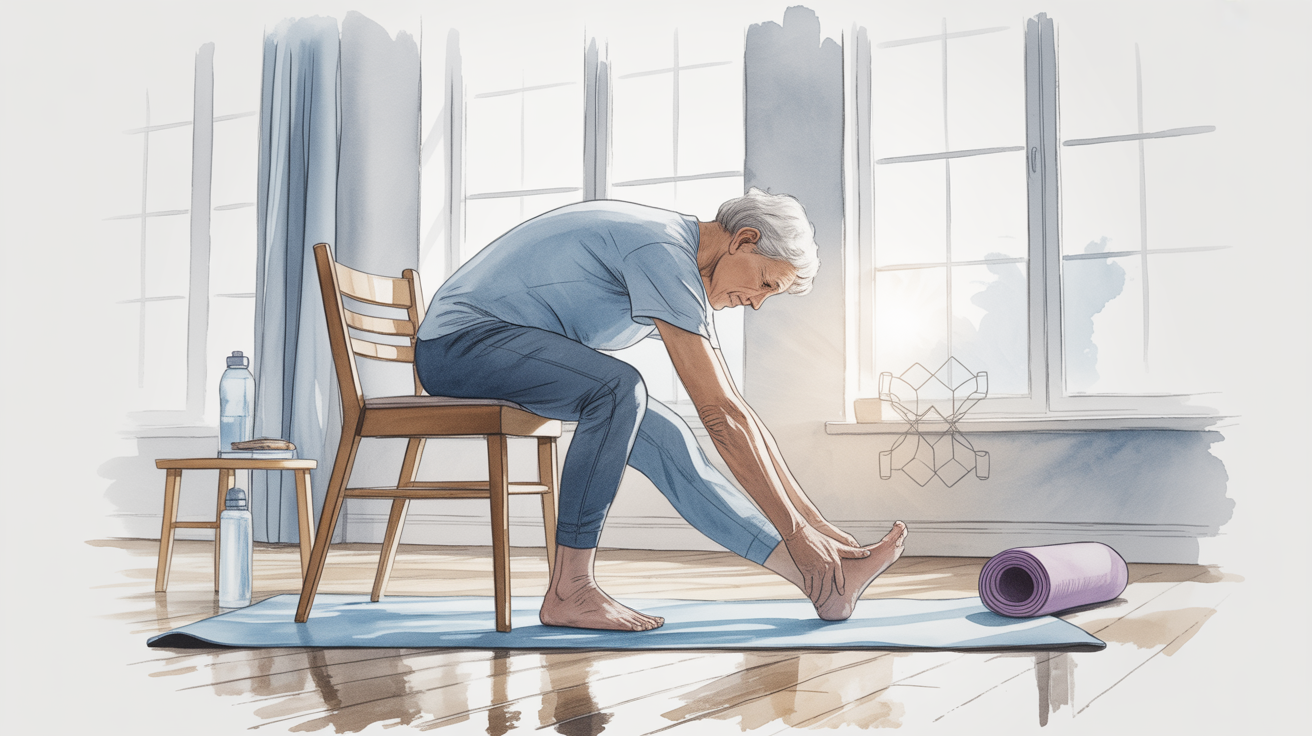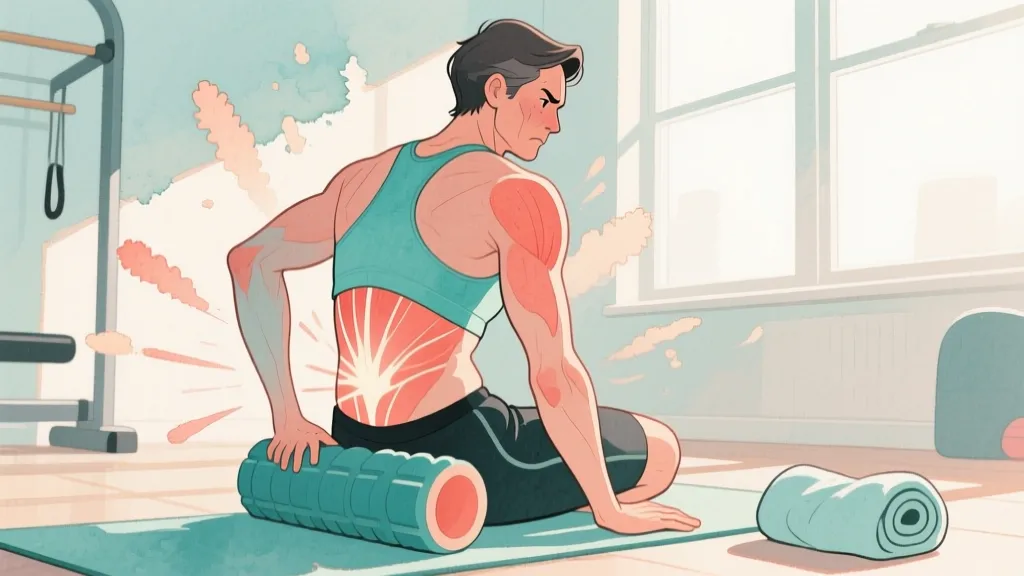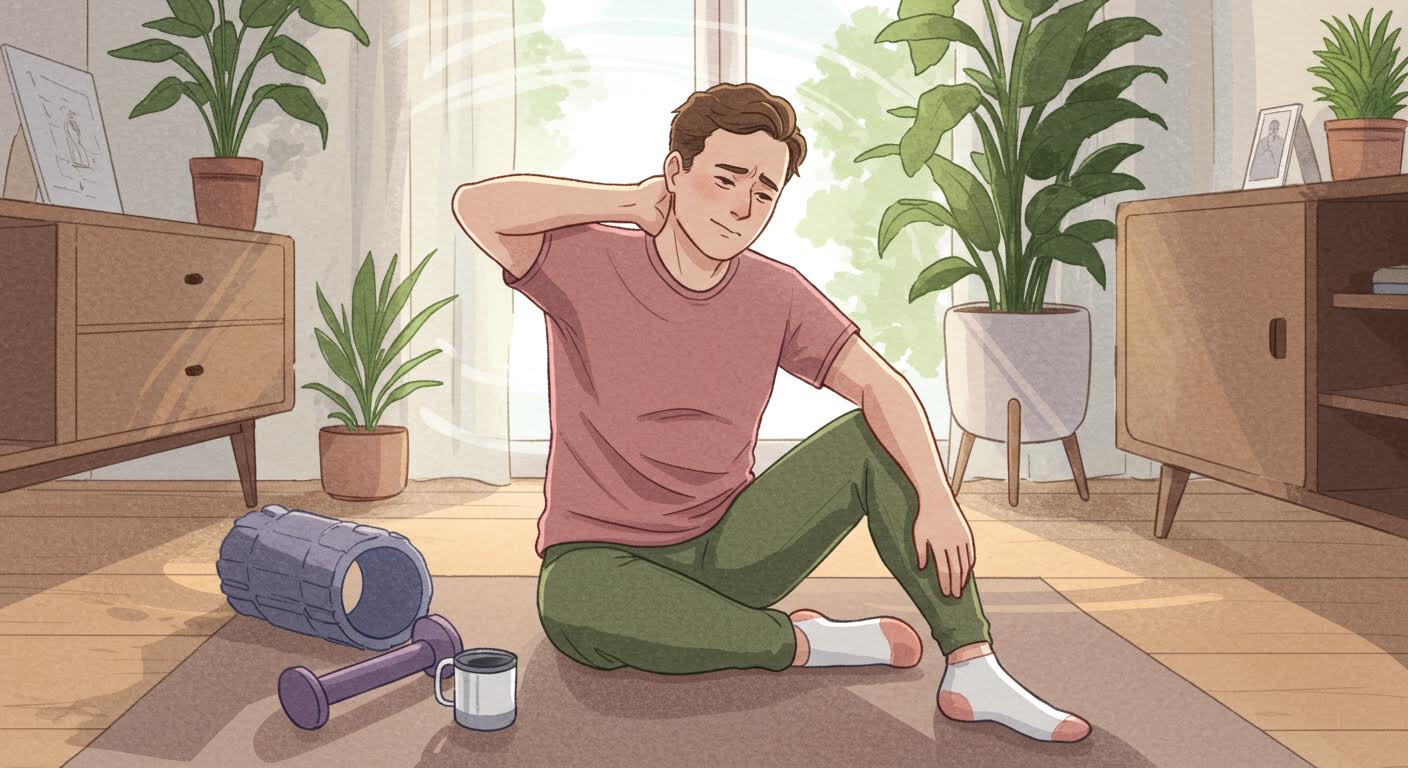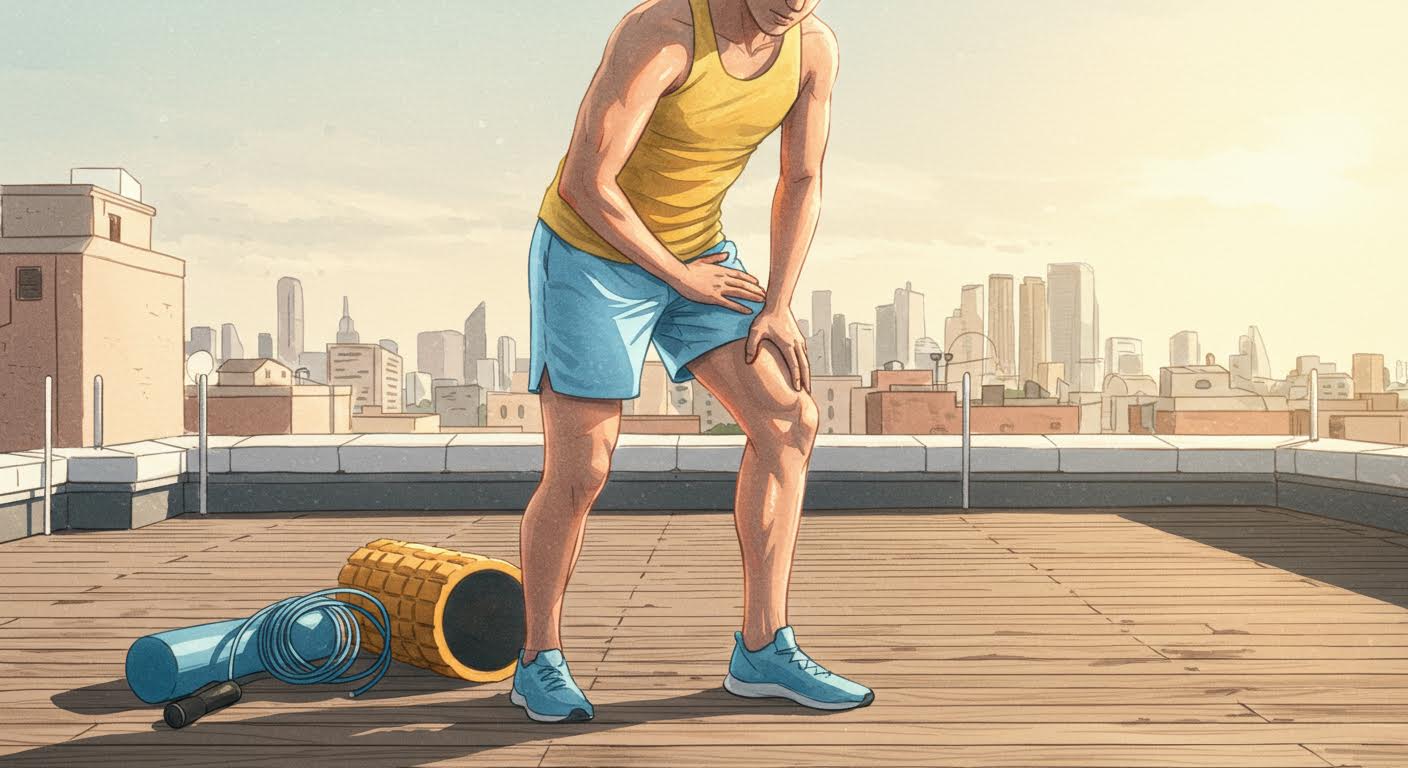Every year, millions of seniors experience falls that can lead to serious injuries, loss of independence, and a decline in quality of life. Fall prevention is not just about safety, it’s about maintaining the freedom and confidence that comes with knowing you’re protected. In this guide, you’ll discover practical strategies to significantly reduce fall risks for yourself or your loved ones. We’ll explore home modifications that make a real difference, exercises proven to improve balance and strength, medical considerations often overlooked, and how to create a personalized prevention plan that works. Whether you’re a senior looking to stay active safely or a caregiver concerned about a loved one’s wellbeing, these evidence-based approaches will help you navigate the challenges of aging with confidence and security.
Understanding Fall Risks in Older Adults
Falls among seniors represent a significant public health concern, with approximately one in four Americans aged 65+ experiencing a fall each year, according to the Centers for Disease Control and Prevention. Understanding the specific risk factors that make older adults more vulnerable is the first step toward effective fall prevention. The physiological changes that accompany aging naturally affect balance, stability, and coordination. Muscle mass typically decreases by 3-5% per decade after age 30, accelerating after 60, which directly impacts strength and stability. Additionally, sensory systems, including vision, proprioception (body awareness), and the vestibular system (inner ear balance), often decline with age, making it more difficult to detect and correct balance issues.
Common environmental hazards in the home contribute significantly to fall risk. These include loose rugs, poor lighting, cluttered pathways, and lack of grab bars in critical areas like bathrooms. Medical conditions such as arthritis, Parkinson’s disease, and diabetic neuropathy can affect mobility and balance. Certain medications, including those for blood pressure, sleep, and mood disorders, may cause dizziness or drowsiness that increases fall risk. The impact of falls extends beyond physical injury. Many seniors who experience a fall develop a fear of falling again, leading to reduced activity, social isolation, and further physical decline, a cycle that significantly diminishes quality of life. Pro tip: A comprehensive fall risk assessment should evaluate all these factors, physical, environmental, and medical, to create the most effective prevention strategy.
Why Seniors Are More Vulnerable to Falls
Age-related changes in the body create a perfect storm for increased fall risk. As we age, our reflexes slow down, making it harder to catch ourselves when we lose balance. Vision changes, including reduced depth perception and difficulty adjusting to changes in light, make it harder to spot obstacles. Chronic conditions like diabetes can cause nerve damage in the feet, reducing sensation and making it difficult to maintain balance on uneven surfaces. Blood pressure fluctuations that occur when standing up can cause dizziness, alot of seniors dont realize this is a common issue that can be addressed.
Common Causes of Falls in the Elderly
Environmental hazards account for approximately 25-30% of falls in older adults. These hazards include tripping risks like loose carpets, cluttered floors, and electrical cords across walkways. Slippery surfaces, especially in bathrooms and kitchens, present significant dangers. Poor lighting makes it difficult to see potential obstacles, particularly at night. Footwear choices also contribute to fall risk, slippers, socks, or shoes without proper support can lead to instability. Seasonal hazards like ice and snow in winter create additional risks for seniors who venture outdoors.
The Impact of Falls on Senior Health and Independence
The consequences of falls extend far beyond the immediate injury. Falls are the leading cause of hip fractures among older adults, with recovery often requiring months of rehabilitation. Even less severe injuries can result in a loss of confidence that leads seniors to limit their activities, creating a dangerous cycle of deconditioning that actually increases future fall risk. According to the National Institute on Aging, many older adults who experience a fall never fully recover their previous level of functioning. The financial impact is also substantial, with the average cost of treating fall-related injuries exceeding $30,000 per incident.
Home Safety Modifications for Fall Prevention
Creating a safer home environment is one of the most effective fall prevention strategies, with studies showing that home modifications can reduce fall risk by up to 26%. The bathroom presents the highest risk due to wet surfaces and limited mobility support. Essential upgrades include installing grab bars near the toilet and in the shower, using non-slip mats both inside and outside the tub, and adding a shower chair or bench for those with balance concerns. Consider replacing a traditional tub with a walk-in shower if budget allows. Toilet seat raisers can also make standing up easier and safer for those with limited strength or mobility.
In living areas and bedrooms, remove tripping hazards like loose rugs, electrical cords, and clutter. Ensure adequate lighting, especially in pathways between rooms and to the bathroom. Nightlights with motion sensors can provide illumination when needed without disturbing sleep. Arrange furniture to create clear pathways, and secure carpet edges with double-sided tape. In the kitchen, keep frequently used items within easy reach to avoid stretching or climbing. For stairways, install handrails on both sides, improve lighting, and add non-slip treads. Small changes make a significant difference in fall prevention. Pro tip: Conduct a “room-by-room walkthrough” at different times of day to identify potential hazards you might otherwise miss, and consider consulting an occupational therapist for a professional home safety assessment.
Essential Bathroom Safety Upgrades
The bathroom requires special attention in fall prevention efforts. Install grab bars that are properly anchored to wall studs (not just to drywall) near the toilet and inside the shower or tub. These bars provide critical support when moving from sitting to standing positions. Non-slip mats should be placed both inside the shower and on the floor outside it. Consider replacing a standard bathtub with a walk-in model or installing a transfer bench that allows sitting while moving over the tub wall. A raised toilet seat or toilet frame can make standing up much easier for those with leg weakness. Proper lighting is crucial in bathrooms, where surfaces are often wet and slippery. Install bright, glare-free lighting and consider adding a nightlight that automatically turns on in darkness.
Living Room and Bedroom Safety Tips
Creating clear pathways is essential in living areas and bedrooms. Remove or secure all loose rugs, as they are a major tripping hazard. Arrange furniture to allow for easy movement, avoiding the need to navigate around tables and chairs. Ensure electrical cords are tucked away along baseboards rather than crossing walkways. Adequate lighting is critical, place lamps within easy reach of beds and chairs, and consider installing rocker switches that are easier to use than standard toggle switches. In bedrooms, keep a flashlight or lamp within reach of the bed for nighttime needs. Bed height matters for safety, beds that are too high or too low can make getting in and out difficult. Consider bed risers or a lower bed frame if the current height causes problems.
Kitchen and Stairway Fall Prevention
Kitchen safety focuses on organization and accessibility. Store frequently used items between waist and shoulder height to avoid the need for bending or reaching. Use a sturdy step stool with a handrail rather than a chair for accessing higher cabinets. Clean spills immediately to prevent slippery surfaces. Ensure good lighting, especially over work areas and the stove. For stairways, install handrails on both sides if possible, and extend them beyond the top and bottom steps. Improve lighting with switches at both top and bottom, and add non-slip treads to wooden stairs. Never leave objects on stairs, even temporarily, as they create serious tripping hazards. Consider installing a stair lift if stairs become too challenging to navigate safely.
Effective Exercises for Fall Prevention
Regular physical activity is perhaps the most powerful tool in fall prevention, with research showing that appropriate exercise programs can reduce fall risk by 23% in older adults. Balance exercises form the foundation of any fall prevention routine. Simple yet effective activities include standing on one foot (with support if needed), walking heel-to-toe in a straight line, and practicing tai chi movements. These exercises improve proprioception and strengthen the muscles that stabilize the body during movement. Start with just 5 minutes daily and gradually increase as balance improves.
Strength training is equally important for fall prevention. Focus on exercises that target the legs and core muscles, which provide stability during daily activities. Leg lifts, wall sits, and gentle squats (with support) build lower body strength, while planks and abdominal crunches strengthen the core. Resistance bands offer a safe way to add intensity without the risk of heavy weights. Flexibility exercises help maintain range of motion in joints, making it easier to recover from a stumble. Simple stretches for the calves, hamstrings, and hips can be done daily, even while watching television. Consistency matters more than intensity when starting an exercise program for fall prevention. Pro tip: Join a group exercise class designed for seniors, the social aspect increases adherence while providing professional guidance on proper form and safety.
Balance Exercises That Reduce Fall Risk
Balance exercises should be performed daily for maximum benefit. Start with simple exercises like standing on one foot while holding onto a sturdy chair for support. As balance improves, try to hold the position for 10-30 seconds before switching to the other foot. Heel-to-toe walking, where you place the heel of one foot directly in front of the toes of the other, challenges balance and mimics real-world walking scenarios. Tai chi is particularly effective for fall prevention, with studies showing it can reduce fall risk by up to 45%. Practice walking in different conditions to prepare for real-world challenges, try walking while looking side to side (not at your feet) or while carrying a small object.
Strength Training for Stability and Mobility
Building strength in key muscle groups provides the foundation for stability and prevents falls. Focus on exercises that strengthen the quadriceps, hamstrings, glutes, and core muscles. Leg lifts, performed while holding onto a chair for support, target the muscles that help lift the feet when walking, reducing the risk of tripping. Wall sits build lower body strength while providing back support. Gentle squats, even just lowering a few inches and standing back up, strengthen the muscles needed for getting up from chairs safely. Resistance bands offer a safe alternative to weights for strength training. They provide variable resistance throughout movements and can be used while seated if needed. Start with light resistance and gradually increase as strength improves.
Flexibility and Coordination Workouts
Flexibility exercises help maintain range of motion in joints, making it easier to recover from a stumble and prevent injuries. Simple calf stretches can be done by placing hands on a wall, stepping one foot back, and keeping the heel flat on the floor. Hamstring stretches can be performed while seated by extending one leg and reaching toward the toes. Coordination exercises challenge the brain and body to work together, improving reaction time when balance is disrupted. Try exercises like marching in place while alternately touching each hand to the opposite knee, or drawing circles with your toes while seated. Practice getting up from the floor safely, this skill is crucial if a fall does occur. Learn techniques like rolling to one side, getting onto hands and knees, and using a sturdy object to pull yourself up.
Medical Considerations for Fall Prevention
Medical factors play a crucial role in fall prevention, yet are often overlooked in safety planning. Medication management represents one of the most significant modifiable risk factors. A study published in the Journal of the American Geriatrics Society found that seniors taking four or more medications had a 30% higher risk of falling. Certain medications, including blood pressure drugs, sedatives, antidepressants, and antihistamines, can cause dizziness, drowsiness, or balance problems. Schedule a “brown bag” review with your healthcare provider, bringing all medications (including over-the-counter drugs and supplements) for evaluation of potential interactions and side effects.
Sensory decline significantly impacts fall risk. Vision problems like cataracts, glaucoma, and macular degeneration can make it difficult to see obstacles or judge distances. Annual eye exams and updated prescription glasses are essential fall prevention measures. Similarly, untreated hearing loss can affect balance, as the inner ear plays a crucial role in spatial orientation. Regular hearing check-ups and appropriate hearing aids when needed can help maintain balance. Proper footwear is an often underestimated factor in fall prevention. Shoes with non-slip soles, adequate support, and a proper fit can significantly reduce risk. Avoid walking in socks or stockings, and choose shoes with low heels and good arch support. Pro tip: Consider consulting with a pharmacist who specializes in geriatric care for a comprehensive medication review focused on fall risk reduction.
Medication Management to Reduce Fall Risk
Medication-related falls are preventable with proper management. Create a complete list of all medications, including prescription drugs, over-the-counter medications, vitamins, and supplements. Note when each medication was started, the dosage, and any side effects you’ve experienced. Bring this list to healthcare appointments for review. Be particularly aware of medications that affect the central nervous system, including sleep aids, antidepressants, antipsychotics, and medications for anxiety. Never stop taking prescribed medications without consulting your healthcare provider, but do ask about alternatives if you’re experiencing side effects that increase fall risk. Some medications may need to be taken at different times of day to minimize dizziness or drowsiness during active hours.
Vision and Hearing Checks for Fall Prevention
Sensory input from vision and hearing plays a critical role in maintaining balance and preventing falls. Schedule annual eye exams to check for conditions like cataracts, glaucoma, and macular degeneration that can affect vision quality. Update prescription glasses as needed, and consider single-vision distance lenses for outdoor activities, as bifocals and progressive lenses can sometimes distort vision when looking down at steps or obstacles. For hearing, get regular check-ups and use hearing aids if recommended. Inner ear problems can significantly affect balance, if you experience dizziness, vertigo, or a feeling of unsteadiness, consult with an ENT specialist for evaluation. Simple home modifications like improved lighting and reduced background noise can help compensate for sensory decline.
Proper Footwear and Assistive Devices
Footwear choices significantly impact stability and fall risk. Select shoes with low, broad heels, non-slip soles, and adequate support for the arch and ankle. Avoid walking in socks, stockings, or backless slippers, as they provide no traction and can easily slip off. Ensure shoes fit properly, too tight or too loose shoes can cause gait changes that increase fall risk. When considering assistive devices like canes or walkers, get professional guidance on proper selection and fitting. Proper technique is essential when using assistive devices, canes should be held on the stronger side and moved with the weaker leg, while walkers should be lifted slightly when moving rather than dragged. Physical therapists can provide training on proper use of these devices to ensure they enhance rather than hinder mobility.
Creating a Comprehensive Fall Prevention Plan
Effective fall prevention requires a personalized approach that addresses individual risk factors and circumstances. Begin with a thorough assessment that includes evaluating medical history, home environment, physical capabilities, and lifestyle factors. The CDC’s STEADI (Stopping Elderly Accidents, Deaths & Injuries) initiative provides a validated tool that healthcare providers can use to assess fall risk. This assessment should result in a prioritized action plan targeting the most significant risk factors first. For many seniors, this might involve starting with balance exercises while scheduling home modifications and medication reviews.
Involving healthcare providers is essential for creating a comprehensive prevention strategy. Your primary care physician can help identify medical risk factors and refer you to appropriate specialists. Physical therapists can design exercise programs tailored to your specific needs and abilities, while occupational therapists can provide expert home safety recommendations. Consider creating a “fall prevention team” that includes healthcare providers, family members, and possibly a professional caregiver who can help implement and monitor your prevention plan. Emergency response systems provide valuable peace of mind as part of a comprehensive approach. These devices, worn as pendants or bracelets, can automatically detect falls and connect users to emergency services with the push of a button. Pro tip: Schedule regular follow-up assessments every 6-12 months to evaluate the effectiveness of your prevention plan and make necessary adjustments as health conditions or circumstances change.
Assessing Individual Fall Risk Factors
A comprehensive fall risk assessment should evaluate multiple domains. Physical factors include muscle strength, balance, gait, and history of previous falls. Medication review should identify drugs that may increase fall risk. Environmental assessment examines home safety hazards. Medical evaluation looks for conditions that affect mobility or balance. Functional assessment evaluates ability to perform daily activities safely. Use validated assessment tools like the Timed Up and Go test (TUG), which measures how long it takes to rise from a chair, walk 10 feet, turn, walk back, and sit down again. Times of 12 seconds or more indicate increased fall risk. The Berg Balance Scale is another tool used by healthcare professionals to assess balance and fall risk through 14 different tasks.
Involving Healthcare Providers in Prevention
Healthcare providers play essential roles in fall prevention. Primary care physicians can identify medical risk factors and coordinate care with specialists. Pharmacists can review medications for potential interactions and side effects that increase fall risk. Ophthalmologists and audiologists address vision and hearing problems that contribute to falls. Physical therapists develop exercise programs to improve strength and balance. Occupational therapists recommend home modifications and adaptive equipment. Communication among providers is crucial for effective fall prevention. Bring a list of all healthcare providers to appointments and encourage communication between them. Consider designating one provider as the “point person” for coordinating your fall prevention plan, especially if you have multiple chronic conditions or see several specialists regularly.
Emergency Response Systems for Peace of Mind
Emergency response systems provide a safety net for seniors living alone or those at high risk of falls. These systems typically include a wearable device with a button that, when pressed, connects to a monitoring center that can summon emergency services. Advanced systems now include automatic fall detection technology that can sense when a fall has occurred and call for help even if the user is unable to press the button. When selecting a system, consider factors like monitoring service quality, battery life, range (how far from the base unit the device will work), and whether it works away from home. Some systems now use GPS technology to provide protection outside the home as well. Costs vary widely, so compare features and read reviews before making a decision. Some insurance plans or community organizations may offer financial assistance for these devices.
Back Injury Prevention for Seniors
Back injuries represent a significant concern for seniors, often resulting from falls but also occurring during daily activities. Proper body mechanics are essential for preventing back injuries while performing routine tasks. When lifting objects, always bend at the knees rather than the waist, keeping the back straight and using the strength of your legs. Hold objects close to your body to reduce strain on the back, and avoid twisting while lifting. For activities like making the bed or gardening, consider using long-handled tools to reduce the need for bending and reaching.
Safe lifting techniques are particularly important for seniors who may already have some degree of osteoporosis or degenerative disc disease. When lifting something from the floor, squat down by bending your knees and keeping your back straight. Tighten your abdominal muscles to support your spine, and use your leg muscles to stand up. If an object is too heavy, don’t hesitate to ask for help or use assistive devices. Exercises targeting the back and core muscles provide essential support for the spine and help prevent injuries. Gentle yoga poses like cat-cow stretch, bridge pose, and child’s pose can improve flexibility and strength. Water exercises are particularly beneficial as they provide resistance without putting stress on joints. Pro tip: Consider investing in a reacher/grabber tool for picking up objects from the floor, this simple device can prevent countless back injuries by eliminating the need to bend down.
Proper Body Mechanics for Daily Activities
Proper body mechanics should be used throughout the day to protect your back. When getting out of bed, roll to your side first, then use your arms to push yourself up while swinging your legs to the floor. When sitting in a chair, choose one with good back support and use your leg muscles to stand up rather than pushing with your back. For activities like vacuuming or sweeping, keep your back straight and move with your legs rather than twisting your torso. Pay attention to posture throughout the day, avoid slouching when sitting or standing, as poor posture places additional stress on the spine. When driving, adjust your seat so you’re not reaching forward, and use a lumbar support pillow if needed to maintain the natural curve of your lower back.
Safe Lifting Techniques for Older Adults
Safe lifting techniques are crucial for preventing back injuries. Before lifting any object, assess its weight and determine if you can handle it safely. When lifting, stand close to the object with your feet shoulder-width apart for stability. Bend at your knees and hips while keeping your back straight. Tighten your abdominal muscles to support your spine, and use your leg muscles to lift the object. Hold the object close to your body as you stand up. Avoid twisting while lifting, if you need to turn, pivot with your feet rather than rotating your spine. When lowering an object, reverse the process, bending at the knees and keeping your back straight. For objects that are too heavy or awkward to lift alone, ask for assistance or use mechanical aids like dollies or hand trucks.
Exercises to Strengthen Back and Core Muscles
Strengthening the muscles that support the spine is essential for preventing back injuries. Core exercises like pelvic tilts, where you lie on your back with knees bent and gently flatten your lower back against the floor, help strengthen abdominal muscles without straining the back. Bird-dog exercises, performed on hands and knees while extending opposite arm and leg, improve balance and core stability. Gentle back extensions, lying on your stomach and slightly lifting your chest, strengthen back muscles. Water exercises are particularly beneficial for those with arthritis or existing back pain, as the buoyancy of water reduces stress on joints while providing resistance for strengthening. Always start with gentle exercises and gradually increase intensity as strength improves, and stop any exercise that causes pain rather than mild discomfort.
Quick Takeaways
- Assess fall risk comprehensively. Evaluate medical factors, home environment, and physical capabilities to create a targeted prevention plan.
- Implement key home safety modifications. Focus on bathrooms, lighting, and pathways to eliminate the most common environmental hazards.
- Practice balance and strength exercises daily. Just 15-20 minutes of appropriate exercise can reduce fall risk by nearly 25%.
- Review medications with healthcare providers. Identify and address medications that may increase fall risk through side effects.
- Use proper body mechanics for daily activities. Protect your back by lifting with your legs and avoiding twisting motions.
- Consider emergency response systems. These devices provide peace of mind and quick access to help if a fall does occur.
Frequently Asked Questions
Q – What are the main causes of falls in the elderly?
A – The main causes include muscle weakness, balance problems, medication side effects, vision issues, and home hazards like loose rugs or poor lighting. Multiple factors often contribute to a single fall incident.
Q – How can I make my bathroom safer for fall prevention?
A – Install grab bars near the toilet and shower, use non-slip mats, add a shower chair, improve lighting, and consider a raised toilet seat. These modifications address the highest-risk area in most homes.
Q – What exercises help seniors improve balance and prevent falls?
A – Tai chi, standing on one foot (with support), heel-to-toe walking, and gentle yoga poses effectively improve balance. Start with 5-10 minutes daily and gradually increase duration as stability improves.
Q – How often should seniors do balance exercises for fall prevention?
A – Aim for daily balance exercises, even if just for 5-10 minutes. Consistency matters more than duration when building balance and stability. Integrate balance activities into daily routines for better adherence.
Q – What’s the best way to prevent falls in older adults with limited mobility?
A – Focus on home modifications like removing tripping hazards, improving lighting, and installing grab bars. Consider assistive devices like canes or walkers, and work with physical therapists on seated exercises that improve strength and stability.
Fall prevention requires a comprehensive approach that addresses physical, environmental, and medical factors. By implementing the strategies outlined in this guide, seniors can significantly reduce their risk of falls and back injuries while maintaining independence and quality of life. I’ve learned the hard way that waiting until after a fall to make changes is a mistake, prevention is always easier than recovery. Start with small, manageable modifications to your home and daily routine, then gradually incorporate more comprehensive strategies as you build confidence and see results. Remember that fall prevention isn’t about limiting activities, it’s about creating conditions that allow you to continue enjoying life safely. Whether you’re implementing these strategies for yourself or helping an elderly loved one, consistency and patience are key. The effort you invest in fall prevention today will pay dividends in mobility, confidence, and independence for years to come. Consider sharing this guide with others in your community, fall prevention works best when everyone is informed and vigilant.




